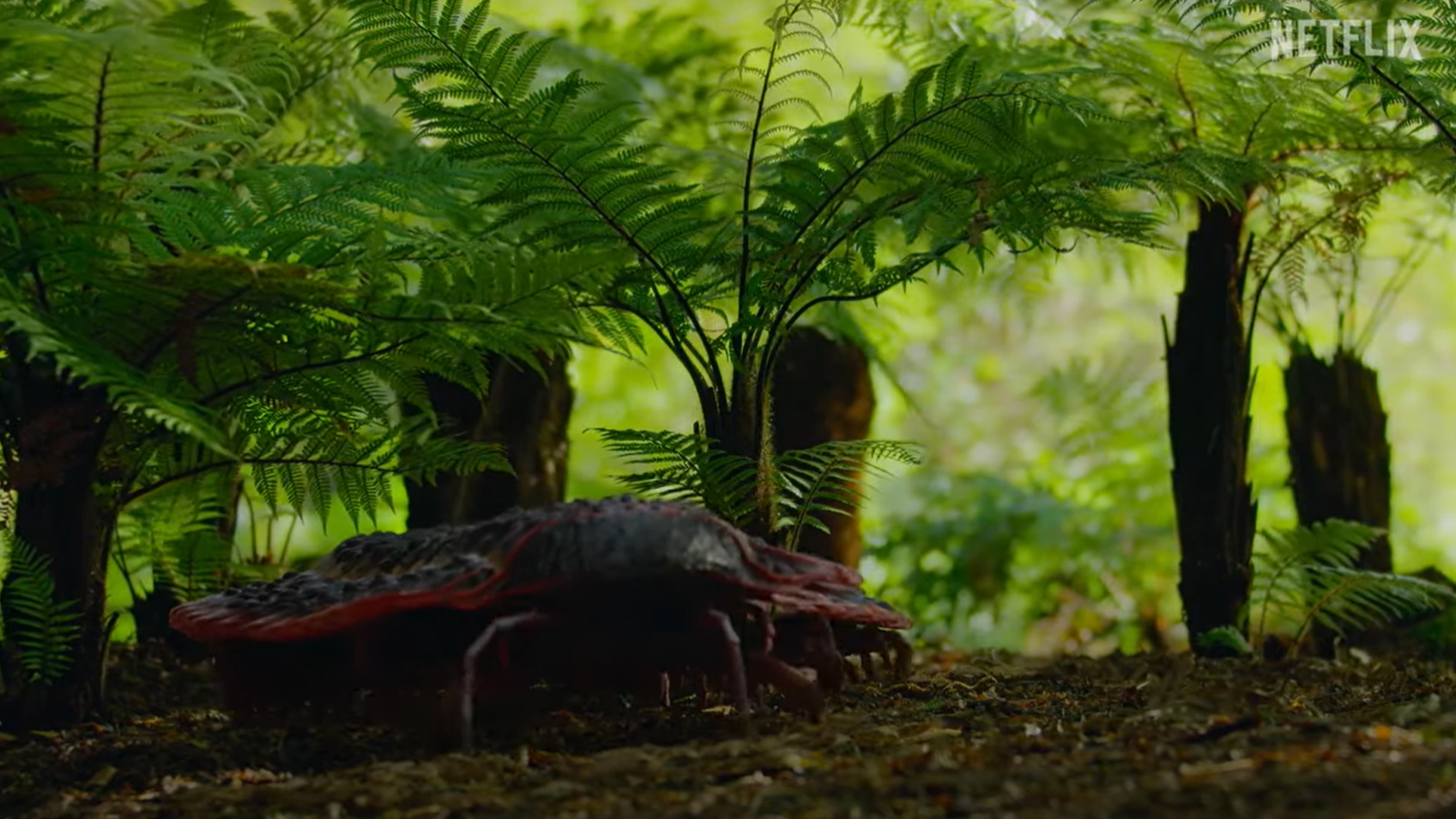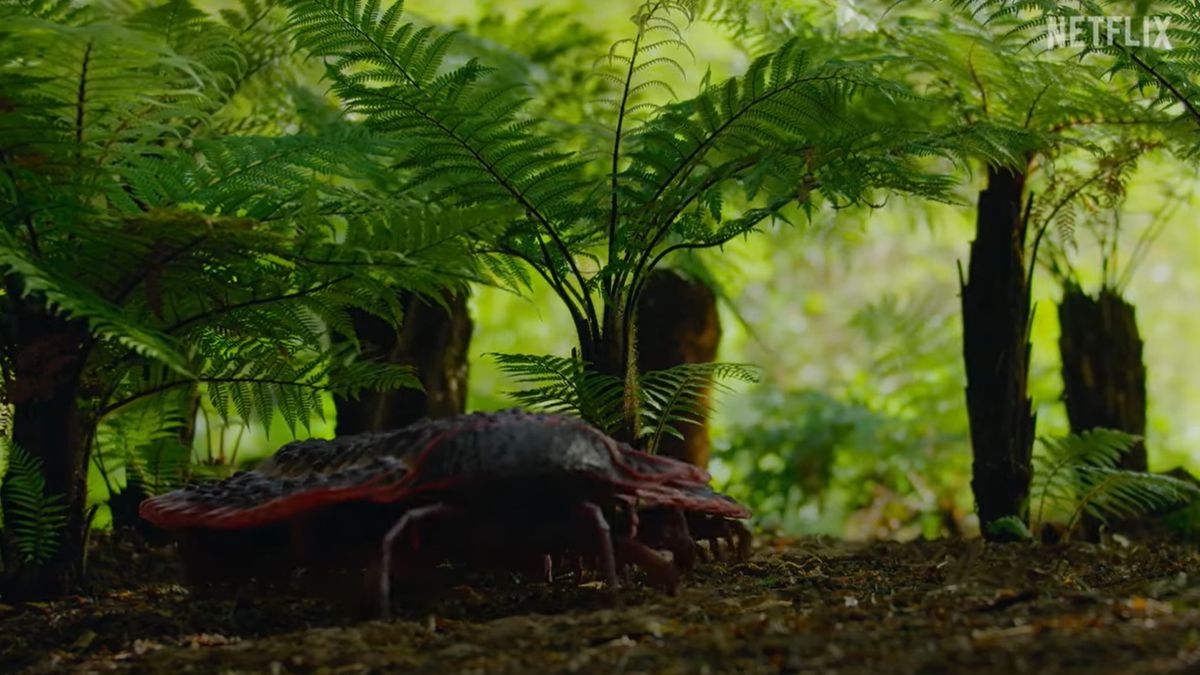A remarkable reconstruction shows a 300 million-year-old millipede the length of a small car crawling around a forest floor looking for love.
The footage was created for Netflix’s “Life on Our Planet” — a series that brings extinct creatures back to virtual life in video footage. The clip shows Arthropleura , which at 8.5 feet (2.6 meters) long and 1.6 feet (0.5 m) wide was the biggest millipede to ever live. It likely weighed about 110 pounds (50 kilograms).
Scientists first discovered Arthropleura fossils 170 years ago. They lived in what is now the U.K., continental Europe and North America during the Carboniferous Period (359 million to 299 million years ago). In 2018, a chance discovery of an enormous, near-complete specimen provided a new, detailed look at the creature’s anatomy — which the team behind “Life on Our Planet” used to help them reconstruct this ancient creature.
“Arthropleura is one of the most factually accurate creatures in the series and one of the most accurate versions of this creature ever brought to life,” series producer and director Sophie Lanfear told Live Science in an email.
Tom Fletcher
Related: ‘Once again, innovation and proliferation ended with catastrophe’: The environmental disaster of plants taking over the world
At the time Arthropleura lived, oxygen levels on Earth were far higher than they are today. Forests had sprouted up, sucking carbon dioxide from the atmosphere. Giant arthropods dominated the planet, along with other huge insects like Meganeura — a bird-size dragonfly — and giant cockroaches up to 4 inches (10 centimeters) long. The high oxygen levels likely played a role in the giant millipedes’ enormous size, although exactly how it helped them grow is unclear.
In the clip, a male of the genus walks around the forest in search of a mate. “Genitals in millipedes are modified legs… You can see the male’s genitals in the very first shot of arthropleura as he goes through frame,” Lanfear said.
The clip also highlights the creature’s blindness. “We know this by looking once more at its modern day descendants,” series producer Dan Tapster told Live Science in an email. “Most millipedes of today have a type of ‘lateral compound eyes’ which only provides them with basic vision — so limited that most are only able to gauge relative levels of light and dark rather than any form of vision as we would know it. Arthropleura boasts those same type of eyes so it’s reasonable to infer that he too was virtually blind.”
Tapster said Arthropleura was one of the most straightforward reconstructions of the whole series, because paleontologists have found such well-preserved fossils of the animal, its carapace, or hard shell, which it shed occasionally, and its footprints.”Put all of those together and the evidence for what it looked like and how it moved is very persuasive,” Tapster said. With these details, Arthropleur a was built up “one pixel at a time.”.
The last piece of the reconstruction was the color of the enormous millipede. Modern proxies can be very colorful, but they likely evolved this trait to scare off predators. As Arthropleura had no known predators, the team toned its colors down, and the reconstruction was complete.
“Life on Our Planet” is available to stream on Netflix now.


